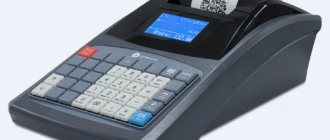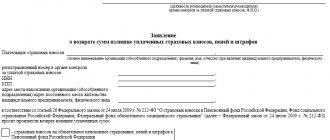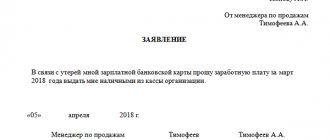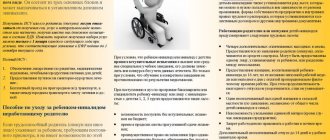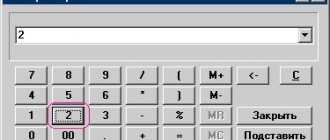New rules for crediting and returning overpayments
From October 1, 2021, the provisions of Federal Law No. 325 of September 29, 2019 will come into force, which simplify the procedure for offset or refund of overpayments of taxes. Until October 1, tax authorities can redistribute overpaid taxes only within the budget of one type. Federal tax goes to the federal budget, regional tax goes to the regional budget, local tax goes to the local budget. For example, by overpaying VAT, a federal tax, you cannot pay off a debt on property tax, a local tax.
Starting from October, it will be possible to offset overpayments against future tax payments or pay off debts for another tax without reference to the budget level. For example, due to the income tax overpaid to the federal budget, it is possible to pay off arrears or a fine to the regional budget for transport tax or to the local budget for land tax.
If there is a tax debt to any budget - federal, regional or local - it is impossible to return the overpayment of taxes in money. The debtor, due to the overpayment, is obliged to first pay off his obligations for taxes, fines and penalties (Clause 6 of Article 78 of the Tax Code of the Russian Federation).
The rules for offset and refund of overpaid insurance premiums remain the same. For example, overpayment of pension insurance contributions cannot be “spread” onto social or health insurance contributions (clause 1.1 of Article 78 of the Tax Code).
New rules for crediting and returning overpayments
From October 1, 2021, the provisions of Federal Law No. 325 of September 29, 2019 will come into force, which simplify the procedure for offset or refund of overpayments of taxes. Until October 1, tax authorities can redistribute overpaid taxes only within the budget of one type. Federal tax goes to the federal budget, regional tax goes to the regional budget, local tax goes to the local budget. For example, by overpaying VAT, a federal tax, you cannot pay off a debt on property tax, a local tax.
Starting from October, it will be possible to offset overpayments against future tax payments or pay off debts for another tax without reference to the budget level. For example, due to the income tax overpaid to the federal budget, it is possible to pay off arrears or a fine to the regional budget for transport tax or to the local budget for land tax.
If there is a tax debt to any budget - federal, regional or local - it is impossible to return the overpayment of taxes in money. The debtor, due to the overpayment, is obliged to first pay off his obligations for taxes, fines and penalties (Clause 6 of Article 78 of the Tax Code of the Russian Federation).
The rules for offset and refund of overpaid insurance premiums remain the same. For example, overpayment of pension insurance contributions cannot be “spread” onto social or health insurance contributions (clause 1.1 of Article 78 of the Tax Code).
How does overpayment of taxes occur?
Overpayment occurs due to errors either by the organization itself or by the tax authority.
Taxpayers themselves are wrong:
- when calculating tax. Accounting may make a mistake when calculating the tax base, applying the wrong tax rate, or not applying tax benefits and deductions;
- when filling out payment orders for the payment of taxes, penalties, and fines. Any error in the BCC or tax amount results in an overpayment for one tax and an underpayment for another.
Overpayment may occur due to advance payments. For example, a company transferred advances for income tax during the year, but at the end of the year the tax turned out to be less than the amount of the transferred advances. So the company overpaid income taxes.
Tax inspectors may mistakenly collect taxes twice. This occurs when a tax, fine or penalty is unilaterally written off from a current account. For example, the taxpayer has already transferred taxes, but the money has not yet reached the tax office. And the Federal Tax Service writes off the amounts without acceptance. Then there may be an overpayment.
Note! Overpayment of taxes must be recorded on the organization’s front card with the Federal Tax Service. If, for example, a company transferred taxes through a problem bank, but they did not go to the budget, it will not be possible to offset or return them.
The courts believe that recognition of the obligation to pay a tax as fulfilled does not give rise to the taxpayer’s automatic right to return or offset the amount of such tax.
They confirmed that the taxpayer does not have the right to compensate for his losses at the expense of the budget (Determination of the Supreme Court of the Russian Federation No. 307-KG18-10845 of August 8, 2021).
How to get your money back
If an entrepreneur (company) decides to return the overpayment amount, he needs to use another form from the Federal Tax Service order No. ММВ-7-8 / [email protected] dated 02.14.2017, proposed in Appendix No. 8. It contains a form for returning the excess amount.
The rules for filling out this document are basically the same. We will not consider them in detail, but will give an example of a completed document. Let's say Kolosok LLC overpaid VAT for the first quarter of 2021 in the amount of 15,732 rubles and now wants to return it. This is what an appeal from the head of an LLC looks like.
How to find out about an overpayment
Both the taxpayer himself and tax inspectors can find overpayments of taxes. You can order a reconciliation report from the tax office or check your transfers in your personal account on the Federal Tax Service website. Within five working days after submitting the documents, tax officials must issue a reconciliation report and send it to the taxpayer.
If the tax authorities were the first to discover the overpayment, they are obliged to notify the organization - within 10 working days they must send a written message and indicate the date the overpayment was discovered (clause 3 of Article 78 of the Tax Code of the Russian Federation). The date of discovery of the overpayment is the day when the inspector discovered the excess for a particular tax. Regardless of whether the tax inspectorate informed the taxpayer about the fact of an overpayment or not, the overpayment can be disposed of within three years from the date of occurrence.
Taxes to the budget for the taxpayer can be transferred by any other person - an organization, an entrepreneur or a citizen without the status of an individual entrepreneur (paragraph 4, paragraph 1, article 45 of the Tax Code). But only the taxpayer himself has the right to return the excess or offset the payment. Third parties cannot do this (paragraph 5, paragraph 1, article 45 of the Tax Code).
If the tax agent did not transfer the over-withheld personal income tax to the employee on time.
So, if the refund of the overly withheld tax amount is carried out by the tax agent in violation of the deadline established by Art. 231 of the Tax Code of the Russian Federation (within three months from the date the tax agent receives the corresponding application from the taxpayer), the tax agent for the amount of over-withheld tax that is not returned to the taxpayer within the prescribed period is obliged to accrue interest, which is also payable to the taxpayer, for each calendar day of violation of the deadline return.
Please note: The interest rate is assumed to be equal to the refinancing rate of the Central Bank of the Russian Federation, which was in effect on the days the repayment deadline was violated.
How can you manage your overpayment?
If an organization or individual entrepreneur has identified an overpayment of taxes, then the excess can be offset against the debt, left in a personal account with the Federal Tax Service for future payments, or the money returned to the current account. Let's consider each point separately.
Credit for arrears
If there is arrears on other taxes, fees, fines, penalties, inspectors will first pay off the arrears to the budget through overpayments. The inspectorate independently decides which tax debt can be closed and informs the organization. But they can only dispose of overpayments that are no more than three years old.
An organization can independently submit an application for credit indicating a specific tax. It is advisable to reconcile the calculations with the budget before doing this. If the amount indicated in the application does not coincide with the data of the tax office, the tax authorities will return the application.
The tax office makes a decision on offset or refusal to offset overpaid amounts against arrears within 10 working days:
- from the moment the overpayment was discovered, if the organization did not apply to the inspectorate with an application for credit against a specific tax;
- from the date of receipt of an organization’s application for credit against a specific tax, if the organization has submitted such an application;
- from the date of signing the act of reconciliation of calculations with the budget, if the inspection and the organization carried out a reconciliation;
- from the moment the court decision comes into force, if the organization has achieved offset through the court;
- from the day following the day of completion of the desk tax audit, which took place without additional assessments;
- if a desk audit revealed violations - from the day following the day the decision entered into force.
Credit towards future payments
If there is no arrears, you need to send an application to the inspectorate for crediting money using the approved KND form 1150057. Applications for crediting taxes overpaid to regional budgets at the location of separate divisions of the organization can be submitted both to the tax inspectorate at the location of the organization and to the tax inspectorates at location of separate units.
The application deadline is within three years from the date of payment of the excess tax or contribution. The application must be accompanied by documents confirming the overpayment - a payment order or an updated declaration. The tax office must make a decision on the offset within 10 working days from the date of receipt of the application from the organization.
Overpayments cannot be counted against future payments of taxes, fees, penalties and fines by other taxpayers. Such offset of Tax Code is not provided (letter of the Ministry of Finance dated March 6, 2017 No. 03-02-08/12572).
Application for tax refund: procedure for filling out
An application for a tax refund must be drawn up in the form approved by Order of the Federal Tax Service of Russia dated February 14, 2017 No. ММВ-7-8/ [email protected] (as amended on November 30, 2018). This form is mandatory for all tax inspectorates in Russia.
On our website there is:
- Sample of a completed tax refund application form. Those lines that need to be completed are filled in in red font.
- Tax refund application template in Excel and PDF format (see files at the bottom of the page). You can download it, fill it out based on our sample and indicate your own data. In those fields in which you need to write your own data in the template, question marks and hints are placed.
To find out within what time frame the inspectorate is obliged to return the tax, see the link. Now a few words about how to fill out the application.
General rules
The application consists of three sheets. You need to fill out at least two: the first title and the second, where your bank details are indicated. The third sheet is filled out only in one case - you did not indicate your TIN in the application. Then on the third sheet you need to provide your passport details. The title page contains your full name and other information about the tax being refunded. On the second sheet enter the bank details for the return. The third sheet is devoted to individual information about you (passport details and place of registration (registration)). The tax office always sends 3 sheets of application. Whether the third sheet is filled out or not is not important. It is included in the kit anyway.
As a rule, one return application is sufficient. For example, if, according to the 3-NDFL declaration, you declared several tax deductions at once (property, social, standard). In one statement, the total amount of tax to be refunded according to the declaration is given. But in some situations you will need to fill out multiple applications. This will be required if:
- you return tax for several years at once. Each year requires its own application;
- you return different taxes. For example, transport and income tax. Each tax requires its own application;
- you return the tax that was withheld at different addresses and OKTMO codes. For example, if you received income from several employers who are located in different tax offices. Each OKTMO requires its own application;
- you made a mistake in the first application and are submitting a corrected document again.
The application can be filled out by hand in block letters, or on a computer. But the signature on the application must be “live” (that is, written by hand). It is placed only on the title page.
The first page of the application is the title page
1. Enter your Taxpayer Identification Number . If you don’t know it, then you can find it out through our “Find out your TIN” service. There is no need to fill out the checkpoint line. It is intended exclusively for organizations.
2. Write the page number in the format 001.
3. Enter the application number in the format “1 — — — — — “. If you submit a second application in the same year, then its number will be “2 - - - - -”, etc.
4. Write the code of the tax office to which you are submitting the application. The rules are as follows: - if you are returning income or transport tax, this is the inspection at your place of residence; - if you are returning property tax, this is an inspection at the location of the property.
You can find out the code of your tax office on the tax service website here.
5. Enter your last name, first name and patronymic (if any) in block letters on each line of the application.
The completed lines will look like this:
6. Next, indicate the payer status . If you overpaid tax, enter the number “1”.
7. Provide an article of the Tax Code , on the basis of which you are required to return the money. This is always Article 78 of the Tax Code. The reasons for the return (error, overpayment, deduction) do not matter.
8. Then enter the overpayment reason code . If you paid (or were deducted from you) an excess - 1, if the amount was forcibly collected from you (for example, bailiffs) - 2, indicator - 3 applies only to organizations. For most people this will be "1".
9. Next, indicate the payment code you are returning. If the tax is 1, if the fee is 2, if the insurance premium is 3, if the penalty is 4, if the fine is 5. The majority will have “1” here.
10. In the next line, enter the amount that you are required to return . The number should be pressed to the right side of the line (see example below). If you are returning income tax, the figure in this line will coincide with the same figure in line 050 of Section 1 of the income tax return (form 3-NDFL). If your declaration contains several lines of Section 1 050, then you need to fill out several applications.
11. Next, indicate the tax period code : two letters, two numbers and the year for which the tax is being returned. All taxes that citizens return are annual (income tax, property tax, transport tax). That's why they write "GD" here. The annual payment has the code “00”. Next, indicate the year for which you are returning the overpayment. For example, you overpaid tax in 2021. We submitted the 3-NDFL declaration for 2021 to the inspectorate. Then indicate the year 2021 in the application and this line will be filled in like this: “GD.00.2019.” The year indicated in the application must coincide with the same indicator entered in the “Reporting year” line of the title page of the 3-NDFL declaration for which you are returning the tax.
12. Indicate the OKTMO code (all-Russian classifier of municipal territories). OKTMO is the code of the region where the tax was paid. The code in the statement is indicated as follows:
- for transport tax - code according to your place of residence (registration);
- for property tax - the code at the location of the property on which you paid the tax;
- for income tax (when receiving deductions for the purchase of housing, treatment or education) - the code indicated in the 2-NDFL certificate issued at the place of work.
You can find out OKTMO at this link.
Attention! If you are returning personal income tax, then the OKTMO code is in the Income Certificate (form 2-NDFL), which must be issued to you by the person who paid you the income and withheld the tax. For example, the company where you worked. If you have several such certificates and they contain different codes, then you need to draw up several return applications. One for each OKTMO code.
13. The next line of the KBK is the code for the budget classification of budget income, which consists of 20 digits. Each tax has its own BCC. You can find out this code if you have a receipt for the tax that you plan to return, previously received from the tax office (this code is on the receipt). If there is no receipt, look for it on the Internet. Example request: “KBK for transport tax”, “KBK for property tax”, “KBK for personal income tax”. For example, BCC for income tax refund is 182 1 01 02010 01 1000 110.
We don't write these codes because they change regularly.
14. Next, indicate the number of pages in the application. It is always “003”. Whether you need to fill out sheet 003 or not doesn’t matter. Let us remind you that this sheet does not require completion if you indicated your TIN on the title page of the application.
15. Enter the number of sheets of documents that you are attaching to this application. If one sheet is “001”, if two - “002”, if three - “003”, etc. When receiving deductions and returning income tax, all documents that confirm the right to deduction are attached to the declaration, and not to statement. You do not need to re-attach them to the application. Therefore, you will have dashes in this field.
When returning income tax for 2021, the completed lines of the application will look like this:
If you are submitting the application in person, in the last block of the title page “Accuracy and completeness of the information specified ...”, indicate “1” (16), your phone number (17), put a “live” signature and enter the date (18). If the declaration is submitted for you by a representative under a power of attorney, enter the number “2”, his full name and the details of the power of attorney certified by a notary (series and number).
There is no need to write anything in the “To be completed by a tax authority employee” block. The tax authorities will fill it out.
If you are submitting an application on your own (without a representative), this block will be filled out like this:
Second page of the application - bank details
On this sheet, re-enter your TIN, last name and initials. Next, enter all the bank details for which the tax must be refunded. Get bank details for depositing money from the bank where you have your card or account. At your request, you will be given a printout where all the details will be indicated. You can take them from the personal account of the bank in which the account is opened (if you have obtained access to your personal account).
In Sberbank Online they do it like this:
1 and 2. Go to the details of your card or account by clicking on it (1) and follow the link “About the card” (2).
3 - 5. To apply you will need:
- bank name (3);
- Bank BIC (4);
- account number (5).
Having obtained your bank details, proceed to filling out the application. They do it like this:
1. Enter your TIN and indicate the page number - 002.
2. Re-write your last name and initials .
3. Indicate the name of the bank through which the money will be returned to you.
4. Write down the account type code to which the money will be returned to you:
- 02 - if the money is credited to a card or account “on demand”;
- 07 - if the money is credited to a bank deposit (deposit).
5. Enter your bank identification code (BIC). These are the 9 digits that are in the bank details.
6. In the “Account number” , enter the number - 1.
7. Carefully (!) write down the account number itself. These are 20 digits that are in bank details.
8. In the “Recipient” , write down the number - 2.
9. For the third time, indicate your last name, first name and patronymic (if available).
Application details such as “Budget classification code of the recipient” and “Personal account number of the recipient” do not need to be filled out.
If you enter the bank details of another person (for example, a wife or husband) into the application, then the money will not be transferred to you under such an application. Also, you will not be able to receive money if you make a mistake in the details (it is enough to miss or write one number incorrectly). Of course, in all these situations there is nothing terrible. The money will be returned to you in any case. But this will require a new application with the correct data. As a result, the return process will be delayed.
Third sheet of application - personal data
You do NOT need to fill out the third page of the application if you indicated your Taxpayer Identification Number (TIN) on the first page. If you do not have this number, then enter your passport details on the third sheet. Everything is quite simple here.
1. Enter the page number - 003.
2. Write your last name and initials for the fourth time.
3. Provide the code of the document that proves your identity. Each such document has its own code. In particular:
- 21 — passport;
- 03 - birth certificate;
- 07 - military ID;
- 10 - passport of a foreign citizen.
A complete list of documents with codes is in Appendix 2 to the Order of the Federal Tax Service of Russia dated October 30, 2018 No. ММВ-7-11/ [email protected]
4. Indicate the series and number of this document.
5. Enter the name of the agency that issued the document to you. If its name does not fit into 2 lines, shorten it. There are no rules for such reduction. So make the cut at your own discretion. For example, instead of the Ministry of Internal Affairs, indicate - Ministry of Internal Affairs; instead of the district, indicate - r. and so on.
6. Indicate the date the document was issued.
Refund of overpayment
To return money to the current account, the organization submits an application in the KND form 1150058 within three years from the date of the overpayment. To make a decision, inspectors have 10 working days from the moment they receive the application or sign the reconciliation report. After 5 working days, tax authorities are required to inform the organization or individual entrepreneur about the decision made (clause 9 of Article 78 of the Tax Code). After a month, return the overpayment to your bank account. If the taxpayer made a mistake and provided incorrect details, the refund will be processed after clarification.
Refund of overpaid taxes is a right, not an obligation, of the taxpayer. An organization or individual entrepreneur can waive their right, which does not contradict paragraph 6 of Art. 78 of the Tax Code of the Russian Federation (letter of the Ministry of Finance of Russia No. 03-07-11/63803 dated December 11, 2014).
Rules for completing an application
The application should be completed according to a special form developed and approved by the Federal Tax Service. When filling out the form, you must adhere to certain standards.
It is best to write in block letters in the document so that all information is as legible as possible, while you should try to avoid inaccuracies and errors, and if they do happen, it is better not to correct them, but to write a new application.
The document is drawn up in two copies , one of which, after being endorsed by the inspector, remains in the hands of the taxpayer, the second is transferred to the tax office.
If the overpayment is more than three years old
An organization can offset or return an overpayment within three years from the date of payment of the excess tax amount. The payment date is calculated differently. For example, for VAT, which is paid without advance payments, the three-year period will be counted from the date of transfer of the tax. And for income tax, which provides for advance payments, the period will be calculated from the moment of filing the declaration.
If the organization missed the deadline for filing an application, you can go to court. When considering a case in court, the limitation period of 3 years will be calculated according to the norms of civil, and not tax legislation. And the countdown of the period does not start from the moment of payment of the excess amount, but from the moment when the organization learned or should have known about it (clause 1 of Article 200 of the Civil Code). But you will have to prove that you learned about the overpayment later than it occurred. And it's not that simple.
Deadlines for filing an application for a refund or credit
An application for a refund or offset of money must be submitted no later than 3 years from the date of the overpayment, which is determined by the date of transfer of funds to the budget (Clause 7 of Article of the Tax Code of the Russian Federation). There are exceptions to this rule.
If the overpayment was due to an excess of advance payments, for example for income tax, to the amount of tax calculated at the end of the year, then the period begins to count from the date of filing the annual tax return (Resolution of the Presidium of the Supreme Arbitration Court dated June 28, 2011 No. 17750/10).
If you miss the three-year period specified in the Tax Code of the Russian Federation, money from the budget can only be returned through the court. The statute of limitations for such cases is 3 years from the moment the taxpayer learned or should have learned about his right to a refund (letter of the Ministry of Finance of the Russian Federation dated March 15, 2021 No. 03-02-08/16920). In the article “How to Refund Overpaid Tax,” we figured out how to correctly calculate deadlines and avoid conflicts with the tax office.
Now that the Federal Tax Service will be required to notify of the discovery of an overpayment, the deadline for filing a claim for a refund must be counted from the moment of receipt of the tax notice or reconciliation with the budget.

